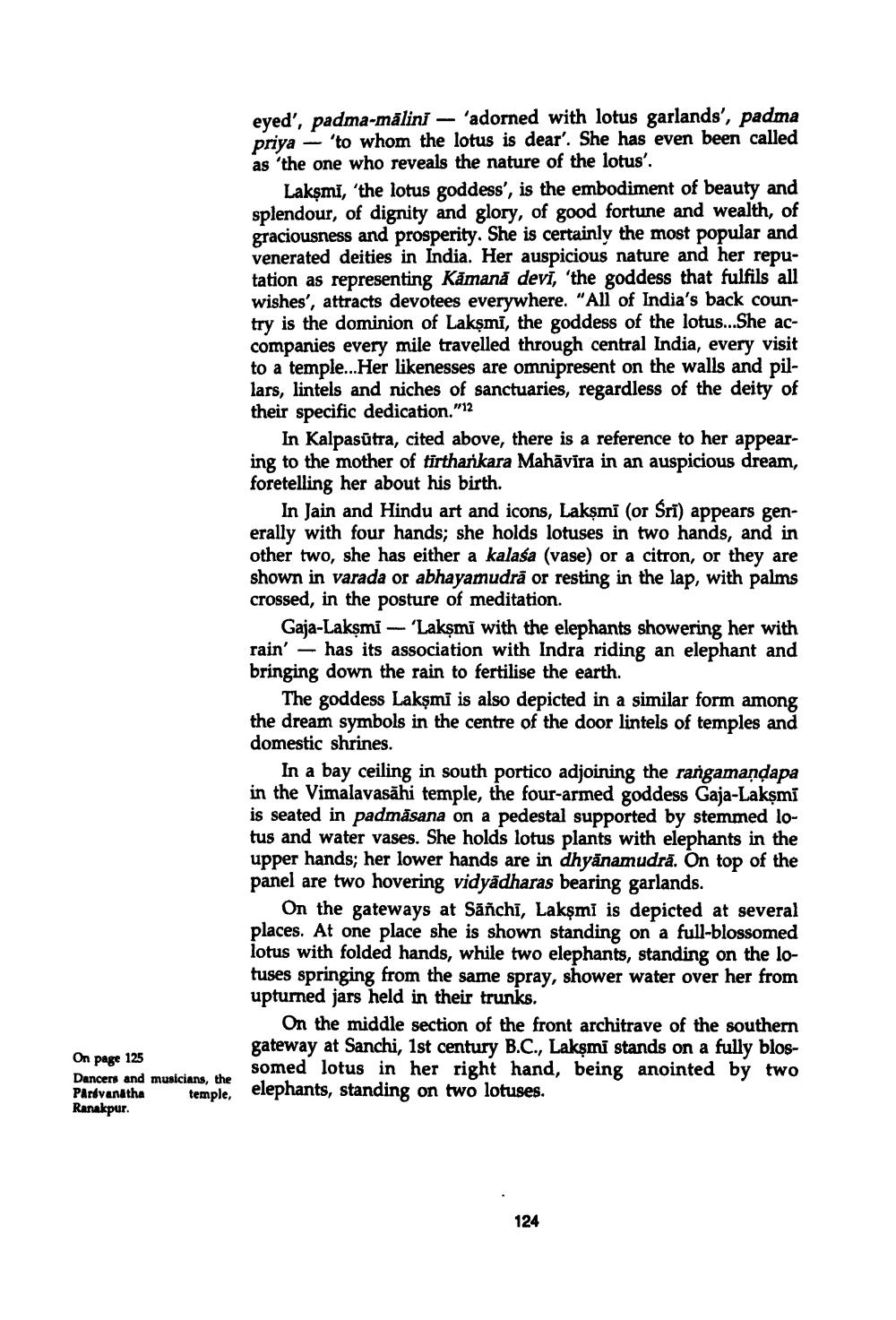________________
eyed', padma-mālinī - 'adorned with lotus garlands', padma priya 'to whom the lotus is dear'. She has even been called as 'the one who reveals the nature of the lotus'.
Laksmi, 'the lotus goddess', is the embodiment of beauty and splendour, of dignity and glory, of good fortune and wealth, of graciousness and prosperity. She is certainly the most popular and venerated deities in India. Her auspicious nature and her reputation as representing Kamană devi, 'the goddess that fulfils all wishes', attracts devotees everywhere. "All of India's back country is the dominion of Lakṣmi, the goddess of the lotus...She accompanies every mile travelled through central India, every visit to a temple... Her likenesses are omnipresent on the walls and pillars, lintels and niches of sanctuaries, regardless of the deity of their specific dedication.""2
In Kalpasūtra, cited above, there is a reference to her appearing to the mother of tirthankara Mahāvīra in an auspicious dream, foretelling her about his birth.
In Jain and Hindu art and icons, Lakṣmi (or Śri) appears generally with four hands; she holds lotuses in two hands, and in other two, she has either a kalasa (vase) or a citron, or they are shown in varada or abhayamudra or resting in the lap, with palms crossed, in the posture of meditation.
Gaja-Lakṣmi 'Lakṣmi with the elephants showering her with rain' has its association with Indra riding an elephant and bringing down the rain to fertilise the earth.
-
The goddess Laksmi is also depicted in a similar form among the dream symbols in the centre of the door lintels of temples and domestic shrines.
In a bay ceiling in south portico adjoining the rangamaṇḍapa in the Vimalavasahi temple, the four-armed goddess Gaja-Lakṣmi is seated in padmasana on a pedestal supported by stemmed lotus and water vases. She holds lotus plants with elephants in the upper hands; her lower hands are in dhyanamudra. On top of the panel are two hovering vidyadharas bearing garlands.
On the gateways at Sañchi, Laksmi is depicted at several places. At one place she is shown standing on a full-blossomed lotus with folded hands, while two elephants, standing on the lotuses springing from the same spray, shower water over her from upturned jars held in their trunks.
On the middle section of the front architrave of the southern gateway at Sanchi, 1st century B.C., Lakṣmi stands on a fully blossomed lotus in her right hand, being anointed by two Parávanatha temple, elephants, standing on two lotuses.
On page 125
Dancers and musicians, the
Ranakpur.
124




